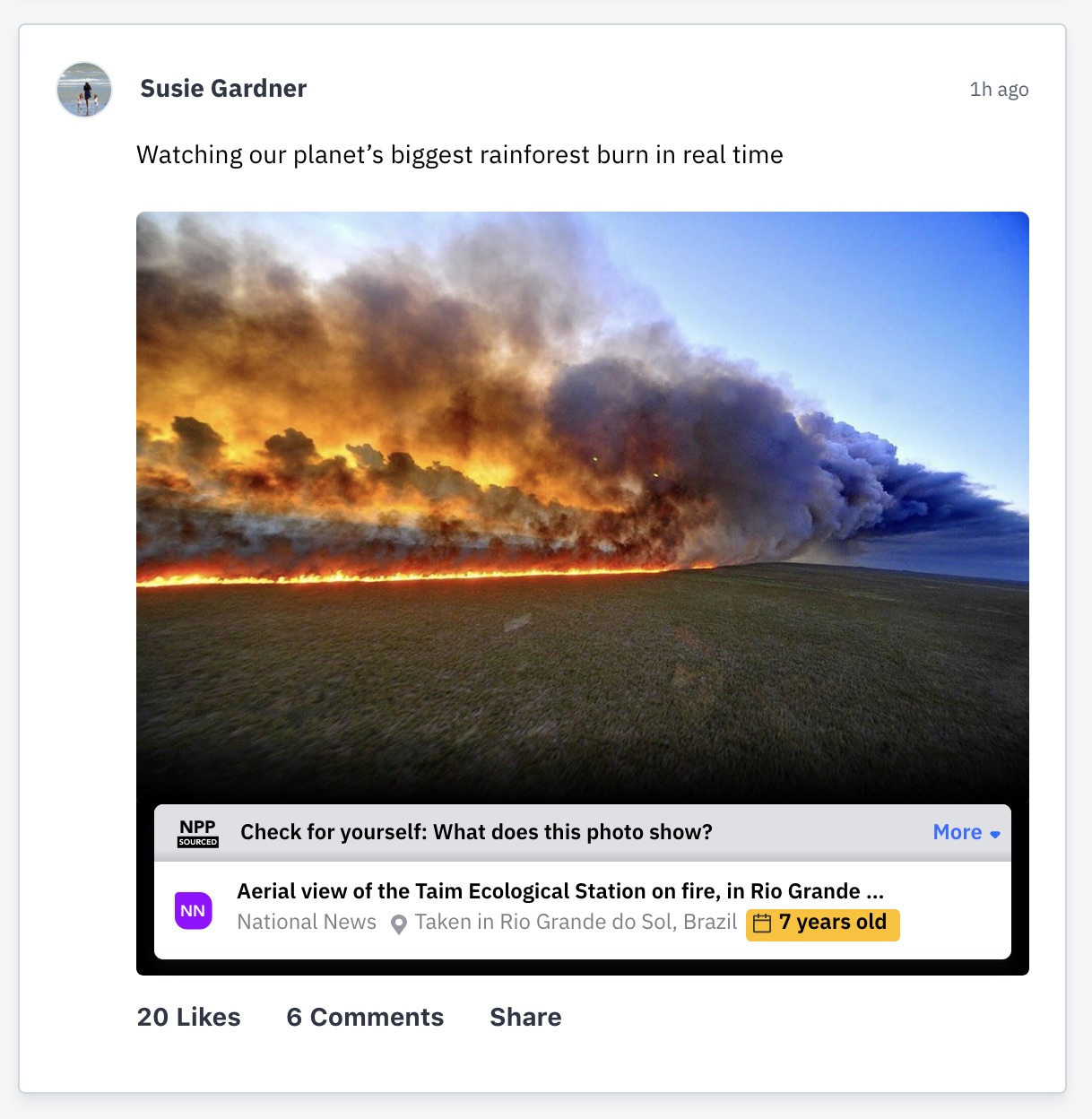“We’re not just fighting an epidemic; we’re fighting an infodemic.”
Very early on in the pandemic in February 2020, I came across a video of crows allegedly flocking the Chinese city of Wuhan on Twitter. 1

The post’s caption wrote: “A truly disturbing number of crows have descended into Wuhan, China… what could be attracting so many? Hundreds of people die all the time. Their city is bigger than New York… What’s happening here is much bigger and much darker.”
Instinctively, something about the video felt disturbing. My hunch was right – after a quick fact check, it was found that the video was taken out of its context to create a misleading claim that the Covid-19 outbreak led to an eerie congregation of crows in Wuhan, when the video was actually filmed in the city of Xining in China, more than 1000 miles away from Wuhan.
It is common knowledge that social media and misinformation go hand in hand. And while it is impractical to identify a single root cause to the spread of misinformation, a study conducted by the Reuters Institute for the Study of Journalism that analyzed a sample of 225 pieces of Covid-19 related misinformation identified that 59% of misinformation stemmed from the reconfiguration of information. 29% of the reconfigured information was misleading context – information that was reformulated to make them false or misleading. 2 In comparison, 38% of misinformation was completely fabricated. In the vast majority of these cases, social media provided the original source of information and allowed users to broadcast their misinformation to public channels.
Today, fact-checking, in the form of verification by a third party before or after information is published is the leading way in combating misleading or false information. 3 A lot of work has also gone into developing machine learning mechanisms with natural language processing capabilities to automatically detect false news. MIT’s Computer Science and Artificial Intelligence Laboratory (CSAIL), for example, has started creating algorithms that detect and analyze certain keywords and phrases to categorize whether an article contains misinformation. 4 However, timing is of the essence when correcting misinformation. From a cognitive point of view, users are subject to the continued influence effect. In other words, once a user is exposed to media, it is much more difficult to overturn initial impressions. 5 Thus, misinformation continues to influence one’s reasoning regardless of whether people receive factual corrections. Furthermore, fact-checking has certain, acute limitations: it is not entirely scalable, nor is the truth always black and white. What is considered as true or untrue will always be somewhat centralized to the biases of the individual or institution making the call.
But what if the alternative was possible – a scalable method in which fact, determined on consensus with utter transparency, can be delivered and verified in a truly decentralized way? What if readers could consume information while being given context to know that what they are absorbing is void of misleading information in real-time?
Enter, blockchain technology.
First, a Crash Course.
Blockchain technology first made headlines when developers under the name of Satoshi Nakamoto implemented blockchain as the public ledger for the world’s first-ever cryptocurrency called Bitcoin. Ever since, its technology has been associated mainly with the development of cryptocurrencies, but its secure, transparent, and immutable nature shows strong promise that the technology can be applied elsewhere.
In very simplified terms, blockchain technology is a secure database engineered in a way that makes it impossible for it to be hacked or cheated. It is decentralized because the database is shared across a network of computers, instead of a distinct entity like the government or public and private corporations. Data is checked and validated by the whole network, recorded in a block, and then added into a chain of blocks. A hash encryption is attached to each block keeping the data secure. The strict order of blocks and the blockchain’s consistent duplication among all other computers that partake in the network ensures the transparency and irreversibility of each transaction. 6
Provenance, in its Purest Form
Just like the videos of crows I stumbled upon, digital images and videos spread misinformation by being copied, modified, and repurposed to support misleading context. A remedy to this would be to prompt a real-time fact check, using facts that are kept secure by a decentralized entity. This is a possibility because fact-checking media is much more objective. It usually only requires original data of when, where, and what the media is truly portraying to compare and contrast whether the media was taken out of context. A blockchain network can store this contextual information of digital media, its structure and encryption safeguarding the fact that the information will not be altered or deleted. Since the blockchain is accessible to everyone, it allows the public to view openly the context in which the image was taken. 7
This is exactly what The New York Times has been testing, through their News Provenance Project. 8 In a blockchain network, the NYT stores a transparent and immutable record of metadata of images and videos. The metadata, in this case, includes contextual information of media — information that answers the question of when, where, and in what context the media was created, as well as a history of how it has been used across news organizations. Then, as an image or video is uploaded, information of its source is pulled upon from the blockchain database and is detailed in a popup text alongside the media for the public to access, confirming whether the media has been used in its accurate context or not. 9

Using this method of fact-checking, the notion of fact is not an individual or third party judgment of what is right and wrong, but rather the metadata that underlies the images and videos. The authenticity of the “fact” stems from the methodology in which metadata is stored in the blockchain. Rather than relying on a simple ‘X is not true’ retraction, this model provides the necessary background information in accessing the accuracy of the media and preserves the capacity for an individual to create their own interpretation and cognitive judgments of true or untrue in real-time.
Research suggests that misinformation is spread, not because people are purposefully willing to spread inaccurate information, but because people are not paying enough attention to the quality and accuracy of the news when deciding what to share over social media. 10 Hence, heightening provenance distributed via blockchain may be a viable method in shifting our relationship with the internet from one of misinformation to one of trust.
A Seal of Approval
Blockchain can also be used to initiate authentication of news articles to provide more credibility to news/media companies and prevent the distribution of misinformation. This works by recording an article’s content and data of publication in an open-source blockchain network whenever a news article by a particular journalism company is created. Edits and text-based changes to the articles are also tracked, creating a transparent log of every alteration. This method of documentation helps verify the origin of news articles, making it easy to confirm whether an article has been manipulated by outside sources.
Some nations have started to implement this on a wide-scale level. After multiple instances where readers were tricked to believe that false stories about COVID-19 came from a legitimate source as the stories deceptively bore the Agenzia Nazionale Stampa Associata (ANSA) byline, ANSA, a leading Italian news agency representing 24 Italian newspapers, introduced the system of a digital seal through a public Ethereum blockchain network. 11 The digital seal acts as verification that the article is recorded in the blockchain, proving, with complete transparency and certainty, that a certain piece of news or interpretation came from ANSA itself. While this solution does not fact-check the article itself, it prevents the creation of false stories that trick readers into thinking information came from reputable sources like ANSA. Because of its potential, companies such as Verizon and their Full Transparency initiative are also one of the many initiatives working on incorporating blockchain technology in officiating their articles in an open system. 12
Unsurprisingly, this blockchain application has numerous benefits. For media companies it can protect the brand reputation, strengthening the element of trust between the company and media consumers. It also aids news organizations when citing information from other organizations, by ensuring that readers are shown and directed to accurate, original sources. For readers, it can ensure the authenticity of the news and that they are being exposed to media from a reputable source. In some sense, this method also preserves the autonomy and subjectivity an individual has in choosing their news source and interpretations while assuring the news they are reading is not manipulated by a third party.
Mitigation, not Elimination
It is still too early to gauge whether blockchain technology will revolutionize the field in solving the infodemic. For one, blockchain proposes a completely foreign social contract — one that lies between individuals and computer algorithms. The novelty of such a contract will take time to permeate society, and general literacy on blockchain technology has a long way to go. As a result, a notion like “blockchain can preserve the integrity of fact in a decentralized manner” still implies very little, and its current applications in journalism may be void of meaning to many. Trust is also another conundrum with recent reports showing that blockchains, used for cryptocurrency purposes, have been hackable. Unlike cryptocurrencies, however, the required level of trust is not as high when using blockchain for journalism purposes because of the scale of its usage. The technology is not leveraged for personal financial transactions, but rather for journalism companies to store records and data in a transparent and immutable manner.
Blockchain’s novelty and lack of trust may cost its widespread implementation in journalism for years to come. Yet, it has proven its capabilities in mitigating misinformation through several creative usages and has offered solutions to addressing ways in which fact-checking can take place in real-time and in a decentralized manner. As the pandemic has exemplified the horrors of misinformation, blockchain is a refreshing solution to an age-old problem.
